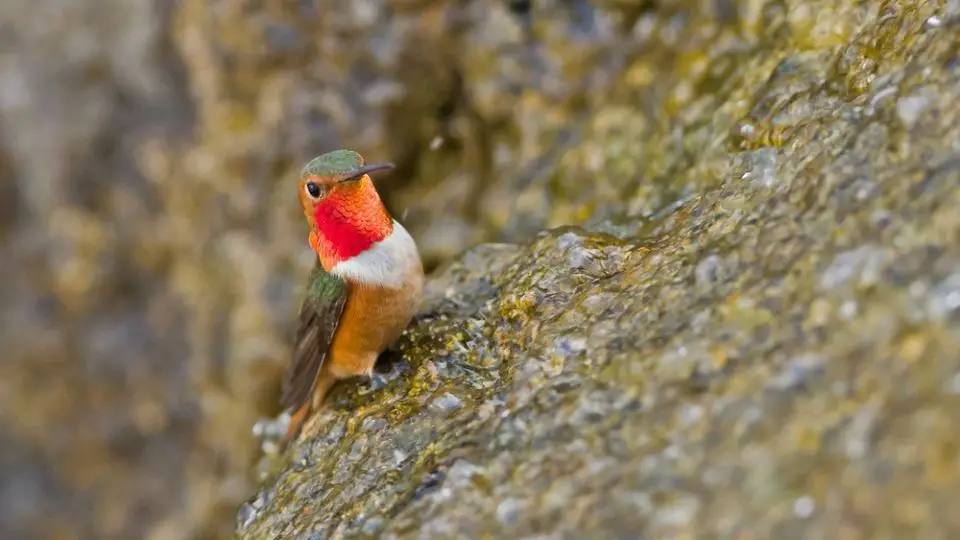Hummingbirds are birds from North and South America that are part of the family Trochilidae. This family has about 361 species and 113 genera—most of them in the tropics, while others reside in colder areas. Florisuginae is a subfamily of hummingbirds that contains two genera.
The Trochilidae family has many species and subspecies of hummingbirds. Each has unique characteristics and plumage. This article will focus on the Florisuginae tribe and show their unique features.
The Trochilidae family comprises 6 subfamilies. One of them being the Florisuginae family, a clade divided into two genera: Topaza and Florisuga. Each genus includes two species.
In a nutshell, this subfamily has a total of four hummingbird species! The French naturalist Charles Lucien Bonaparte coined the term Florisugeae in 1853. This was the original term. Let’s explore the various groups of hummingbirds and the relationships between them.
Table of Contents
Group of Hummingbirds
The family Trochilidae can be divided into two groups:
- Hermits (subfamily Phaethornithinae)
- Non-hermits (subfamily Trochilinae).
Of those two groups, these hummingbirds can be separated in 9 clades:
- Topazes and Jacobins
- Hermits
- Mangoes
- Coquettes
- Brilliants
- Giant hummingbird (Patagona gigas)
- Mountaingems
- Bees
- Emeralds
Species and subspecies from the Florisuginae family
Topaza
- Crimson topaz (Topaza pella)
- Fiery topaz (Topaza pyra)
Topaza hummingbirds, also called topazes, are colorful birds typically living in the Amazon Basin. Females have plumage that is primarily green. Males have an iridescent green throat, black hood, and are crimson and gold.
Florisuga
- White-necked jacobin (Florisuga mellivora)
- Black jacobin (Florisuga fuscus)
Florisuga hummingbirds are also called Jacobins, and you can find them in Bolivia, Peru, Brazil (white-necked Jacobins) and Brazil, Argentina, Paraguay, and Uruguay (Black Jacobin). The male has a head that is primarily dark blue. It’s back is green and has white on its chest and belly. Their tail are black with white tip.
The females appearance can vary widely. Females are highly variable, and may resemble adult or immature males. Most have a blue-green throat, with a top and tail that are green, often with blue tips.
Hummingbirds species part of the Florisuginae family: Identification and characteristics
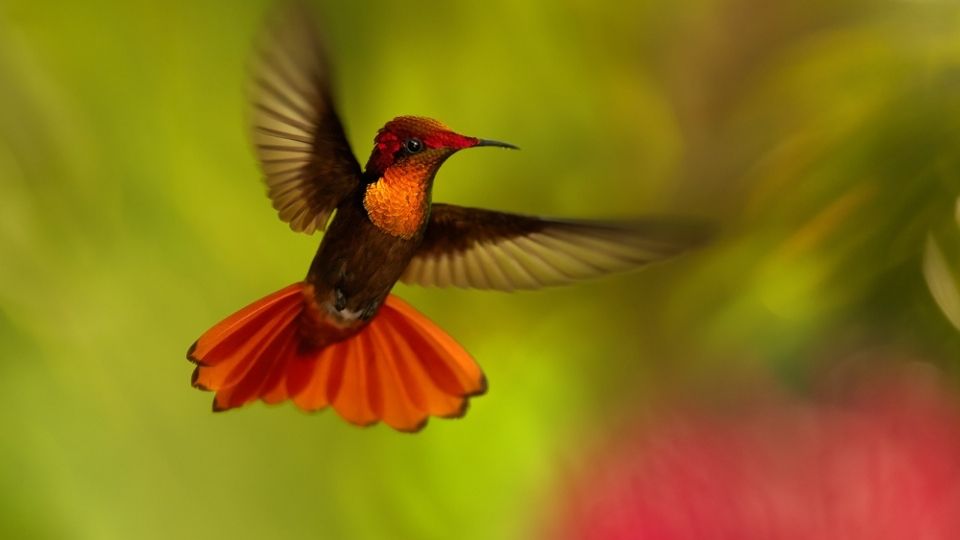
Crimson topaz
Subspecies of Crimson Topaz:
- Topaza pella pella – Linnaeus (1758)
- Topaza pella smaragdulus – Bosc (1792)
- Topaza pella microrhyncha – Butler, AL (1926)
Crimson Topaz (Topaza pella) hummingbirds eat tube-shaped flowers filled with nectar, like canopies and epiphytes. They also supplement their diet with much-needed protein from small insects. You can find this hummingbird in the lowland rainforests of Venezuela, Brazil, French Guyana, Colombia, Venezuela, Peru, and Suriname.
The Crimson Topaz is a larger hummingbird, its size being close to that of the Giant hummingbird—the largest hummingbird in the world. They are 21-23 cm long and weigh about 11-19 g. Females are slightly smaller than males (13 – 14 cm and 9 – 12.5 g)
The male Crimson Topaz stands out through its two long tail feathers and the iridescent golden-green throat. They have a black head, face, and neck sides. Their overall plumage is red and orange, with some purple on the belly.
Tail feathers combine golden and bronze-green. Noticeable also are some red parts and a black band. Even their feet and wings have some orange and brown color.
The female Crimson Topaz is duller and seemingly shorter—they have a green head and back, a light green-golden belly, and a green and crimson throat. The tail feathers are a combination of bronze, violet, and brown. You can see them often in lowland forests.
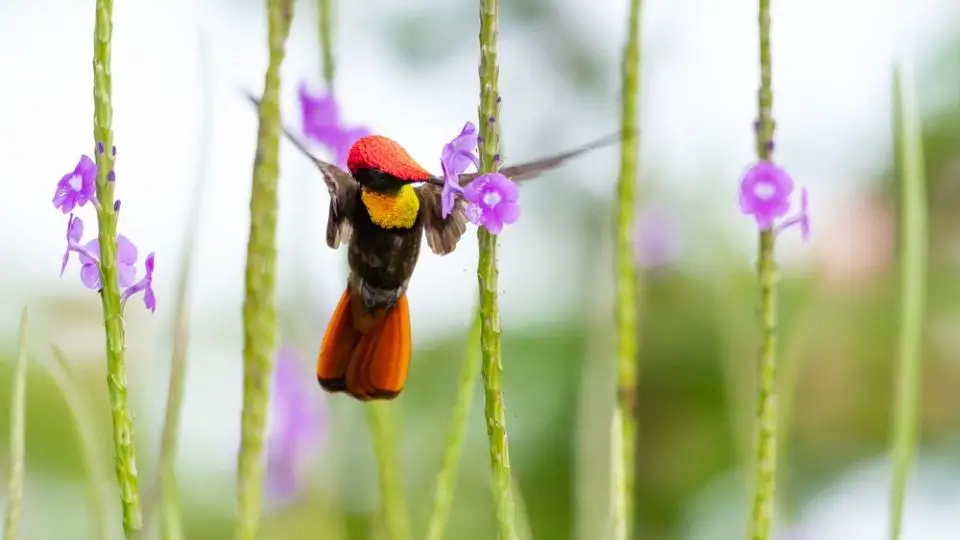
Fiery Topaz
Species of Fiery Topaz:
- Topaza pyra pyra
- Topaza pyra amaruni
You can find the Fiery Topaz (also called the “Inca Topaz”) primarily in tropical and subtropical areas of Ecuador, Colombia, Brazil, Peru, and Venezuela. They migrate significantly less than other hummingbirds.
Like the Crimson Topaz, these are large hummingbirds too. A Topaza pyra male can have 19 cm in length, but females are slightly smaller. The male Fiery Topaz is orange and red on the back, breasts, and belly, with a yellow and green rump and upper tail. A part of the head is black and has an iridescent orange-red and green throat.
Females have a metallic green back and a turquoise head. They have a red gorget with an orangey-green band. Their tail is violet, and their feet are orange.
The Fiery Topaz resembles the Crimson Topaz greatly, the difference being the shorter bill and longer wings and tails. The Fiery Topaz feeds on flowers in high elevations and insects that add much-needed protein to their diet.
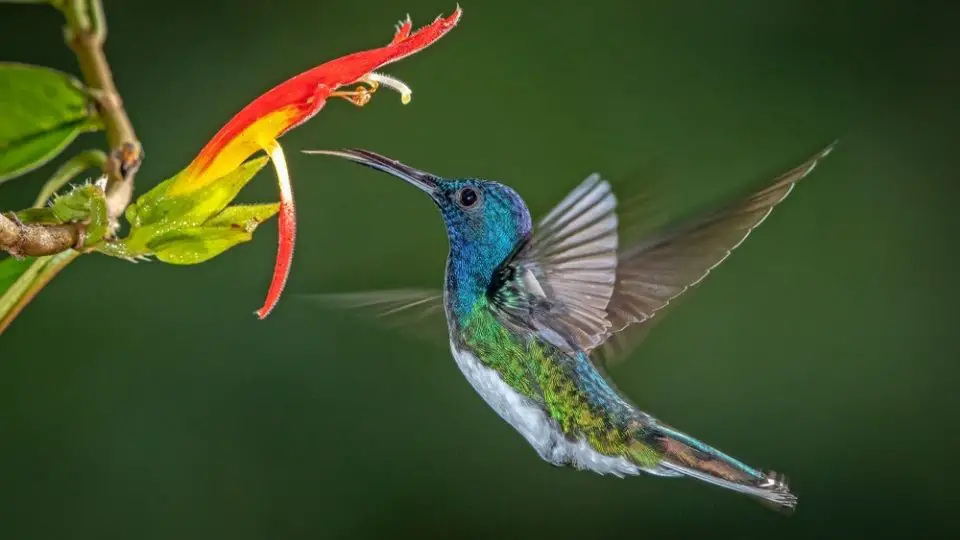
White-necked Jacobin
Subspecies of White-necked Jacobin:
- Florisuga mellivora mellivora
- Florisuga mellivora flabellifera
You can see this blue flying jewel, known as Florisuga mellivora, in Central America and Mexico all the way to Brazil, Bolivia, Peru, and Trinidad & Tobago. They inhabit humid forests and the tree canopy.
Male White-necked Jacobins are of medium size, having 7.4-9 g. females are smaller (about 6-9.2 g). The Male white-necked Jacobin has a deep blue head and chest, a green back, white tail feathers and belly, and black tail tips. Female white-necked Jacobins have a green back, turquoise throats with white patches, green and blue tail feathers, and a white belly.
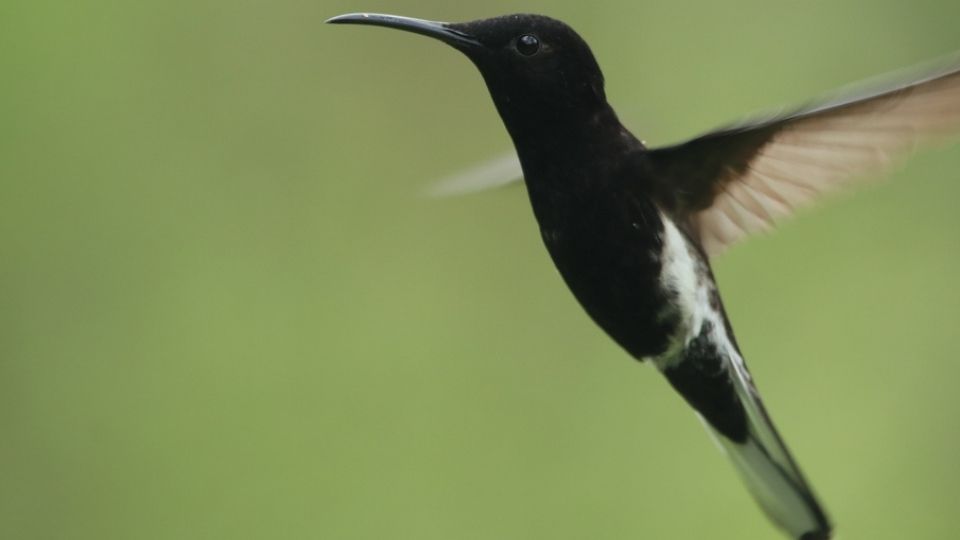
Black Jacobin
Black Jacobin (Florisuga fuscus) are monotypic and have no subspecies. You can find Black Jacobins in the forest edges and woodlands of Brazil, Argentina, Uruguay, and Paraguay. Black Jacobin tend to be more aggressive and territorial than other hummingbirds.
Black Jacobin males have about 9g, and females typically weigh 8g. They’re both about 12-13 cm long. Both male and female Black Jacobins have black, brown, and green backs & upper tails. Inner rectrices are black and outer rectrices are white with black. Juveniles have cinnamon throat feathers, compared to adults.

